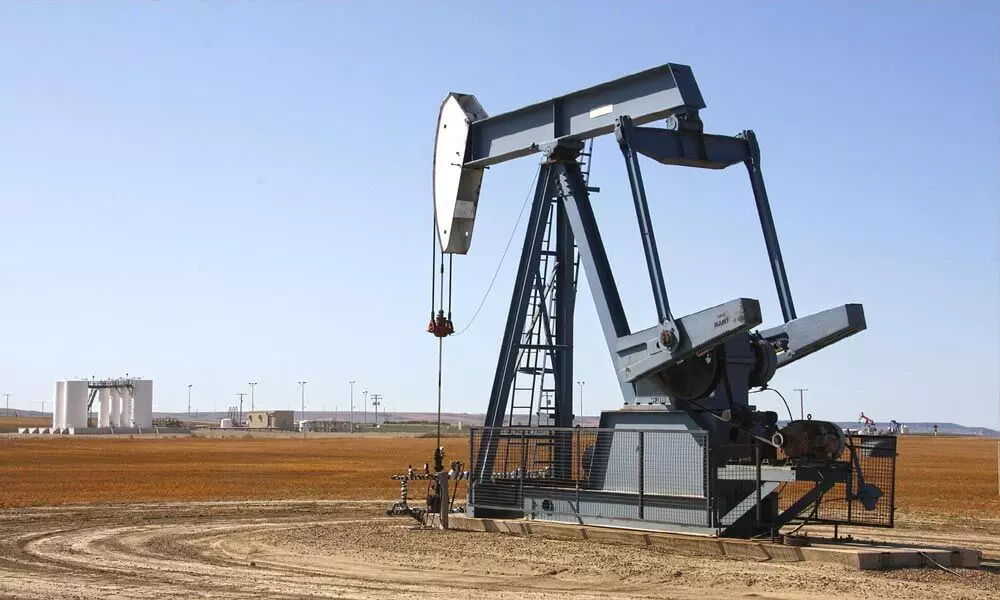Supply shortage fueling Oil prices
Strong demand of oil as the world recovers from Covid-19 is also adding fuel to fire
image for illustrative purpose

In FY21, RBI purchased Rs5.1 trillion worth of forex and its forex reserves swelled by $103.72 billion. Despite the second wave of Covid-19, Rupee gained strength and even went below 73 per dollar - Soumya Kanti Ghosh, chief economic advisor, SBI group
Mumbai: Oil prices have been on an upward trajectory supported by a global supply shortage and strong demand as the world recovers from Covid-19. It is reminiscent of the early 2010s when oil was way above the $100 mark. The downward slide of oil from late 2014 started providing support to the external sector of India, which is heavily dependent on crude oil imports to meet the demand. Current Account Deficit which touched a high of -4.82 per cent of GDP in FY13 started declining and has not gone above -2.1 per cent since then. However, the rising crude prices and overall supply side bottlenecks due to Covid-19 are raising concerns again. The eerie similarity does not end here.
The news of bond purchase taper in the recently published FOMC Minutes for September 21 and 22 is akin to that suggested in May 2013 by the then Fed Chairman Ben Bernanke, that the Fed would begin reducing its programme of asset purchases. In the four months after Bernanke had first mentioned tapering, emerging-market exchange rates fell by 6 per cent against the dollar. Between May 2013 and Sep 2013 Rupee lost as much as Rs 14, says an internal report by SBI.
"If we look at the current Rupee trajectory, it saw a tumultuous 2020 when the news of Covid-19 pushing the exchange rate down rapidly broke out. However, Rupee started gaining strength as India saw a current account surplus and foreign investors-maintained faith in the economy by pouring in capital. RBI had continuously made forex purchases. In FY21, RBI purchased Rs 5.1 trillion worth of forex and its forex reserves swelled by $103.72 billion. Despite the second wave of Covid-19, Rupee gained strength and even went below 73 per dollar," says Soumya Kanti Ghosh, chief economic advisor, SBI group.
However, recently Rupee went from 73.09 per dollar as on September 1 to a low of 75.52 per dollar on October 12. It has again started appreciating and is presently at around 75. If we look at the turnover in the forex market, there has been excess supply of dollars at $2.2 billion in August 2021. This clearly shows that the appreciating bias on Rupee remains, he added.
The September 2021 merchandise trade deficit at $22.59 billion is quite high and has the closest counterpart in October 2012 when India recorded a merchandise trade deficit of $20.21 billion. But it needs to be remembered that trade data shows seasonality and it is fairly common to see jump in imports, as well as exports every quarter end month. So far India's exports have been doing quite well. India's merchandise exports in April-September 2021 were $197.9 billion, a robust increase of 24.3 per cent over $159.2 billion in April-September 2019, he added.
In composition terms engineering goods are the most valued. India has also seen considerable increase in products like cereal preparations, cotton, electronics. drugs and pharma and chemicals are also performing well. Thus, achieving the target of $400 billion is not a pipe dream and this will provide a strong cushion to the current account balance, even if the oil import bills rise rapidly. Taking everything into account our CAD projections stand at -1.4 per cent. India is also witnessing robust FDI inflows even if the FPI flows are showing some volatility.
With CAD at a comfortable situation and an extremely unlikely devastating third Covid, Indian Rupee is going to handle any taper news with relative calm. Considering higher domestic inflation, as supply disruptions mount, it will not do any harm for RBI to lean with the wind and let Rupee appreciate as it can lead to reduced imported inflation when metal and oil prices are rising, and clearing the liquidity overhang to some extent. Meanwhile, RBI has been globally applauded for its effective management of exchange rate fluctuations. IMF in its recently released article IV consultation welcomed the authorities' commitment to maintain exchange rate flexibility.
WPI inflation has averaged 11.6 per cent in H1 FY22, remaining markedly above CPI inflation (5.34%). Since the onset of the pandemic in 2020, consumer price and wholesale price inflation rates have been exhibiting considerable divergence.

